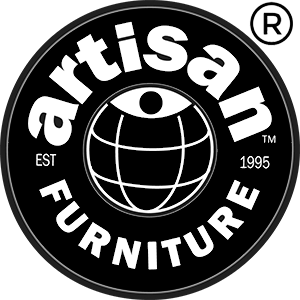Steering furniture compliance and safety standards involves ensuring alignment with key regulatory frameworks like ASTM F2057, which prevents tip-over accidents, and CARB Phase 2, which restricts formaldehyde emissions. We must adopt strategies like Total Quality Management to maintain consistent quality across production, while also obtaining certifications such as FSC to prove our commitment to eco-friendly practices. Adhering to standards not only enhances product durability but also boosts customer satisfaction and trust. Understanding and adapting to evolving regulations is essential for maintaining a competitive edge. Exploring further could lead to insights on leveraging compliance for innovation and market success.
Table of Contents
ToggleUnderstanding Regulatory Frameworks
Maneuvering the intricate terrain of regulatory frameworks is vital for furniture manufacturers aiming to secure product safety and compliance.
We must align our operations with industry benchmarks, guaranteeing we meet and even surpass regulatory requirements. This involves conducting stringent checks on materials and products to prevent non-compliance risks.
By adopting strategic approaches like Stackelberg game theory, we can enhance our competitive advantage and improve overall product quality. It's essential to remain flexible and continuously learn to adapt to ever-changing compliance regulations.
Within our supply chains, strategic maneuvering is necessary to maintain excellence, often demonstrated through rigorous certification processes.
Our commitment to understanding regulatory frameworks guarantees not only compliance but also positions us as leaders in quality assurance.
Key Safety Standards in Furniture
Guaranteeing the safety and quality of our furniture is essential, and adhering to key safety standards is the foundation of this commitment.
These standards, such as ASTM F2057, are significant in preventing tip-over accidents, especially in clothing storage units. By adhering to ANSI/BIFMA X5.5, we secure the durability and structural integrity of our office furnishings.
CARB Phase 2 plays an important role in restricting formaldehyde emissions, thereby preserving indoor air quality. Additionally, FSC Certification confirms our commitment to responsible wood sourcing from well-managed forests.
These standards not only protect consumers but also enhance our product's longevity and customer satisfaction. By rigorously applying these guidelines, we maintain a high level of safety and reliability in all our furniture offerings.
Ensuring Quality Compliance
Achieving quality compliance in furniture manufacturing is a multifaceted endeavor that requires our unwavering commitment to industry standards and continuous improvement.
We recognize the importance of adhering to key safety and quality standards to guarantee our products meet the highest benchmarks. This commitment helps us create furniture that's both safe and durable, providing peace of mind to our customers.
To guarantee quality compliance, we focus on:
- Implementing Total Quality Management (TQM) for consistent quality across all production stages
- Conducting strict audits throughout the supply chain
- Obtaining certifications like FSC to demonstrate our excellence
- Staying adaptive to changes in compliance regulations
Environmental Impact and Compliance
Our commitment to environmental impact and compliance underscores every facet of our production process. We prioritize eco-friendly practices, integrating sustainable materials at every stage.
By utilizing low-carbon materials and refining our distribution methods, we greatly reduce our carbon emissions. Compliance with environmental regulations not only aligns us with legal standards but also enhances customer trust.
Certifications like FSC and GREENGUARD reflect our dedication to reducing environmental footprints. Advanced technologies further boost production efficiency, ensuring we meet and exceed compliance benchmarks.
Continuous improvement efforts drive us to enhance our environmental performance. Additionally, strict adherence to environmental protocols helps us maintain a competitive edge in the market, proving that sustainable practices aren't only responsible but also strategically beneficial.
Innovation Driven by Regulations
In the ever-evolving landscape of furniture manufacturing, regulations often become catalysts for innovation. By adhering to compliance standards, we push the boundaries of design and production, fostering innovation in unexpected ways.
Regulations encourage us to rethink traditional processes, leading to advancements that not only meet but exceed industry benchmarks. Some innovation-driven outcomes include:
- Development of new materials: Safer, more sustainable options are uncovered.
- Enhanced manufacturing techniques: Efficiency and quality become focal points.
- Eco-friendly product designs: Sustainability becomes integral to creativity.
- Improved brand reputation: Compliance strengthens market position.
These regulations serve as a framework, guiding us to improve and adapt.
Global Certifications for Market Access
Maneuvering the global market often demands an extensive understanding of diverse certification processes. As furniture manufacturers, we recognize that accessing international markets hinges on adhering to various global certifications.
Key certifications like FSC and PEFC guarantee our products meet standards for responsible forest management, reflecting our commitment to environmental stewardship. GREENGUARD, a U.S. certification, focuses on low-emission products, vital for maintaining indoor air quality.
The EU Ecolabel, with its stringent environmental criteria, assesses our products' eco-friendliness, confirming they meet European standards. Each certification not only assures compliance with safety and quality benchmarks but also enhances our marketability.
Leveraging Compliance for Competitive Edge
Amidst evolving market demands, leveraging compliance as a competitive edge can transform how we approach the furniture industry. By integrating compliance frameworks, we don't just meet regulatory standards; we become industry leaders.
Understanding and implementing these standards can set us apart, enhancing our products' quality and safety. Let's consider key strategies:
- Innovation through compliance: Regulations often spark new material and process developments.
- Market differentiation: Adhering to standards can boost brand reputation.
- Sustainability focus: Compliance with environmental guidelines attracts eco-conscious consumers.
- Global certifications: Meeting diverse international standards opens more market opportunities.
Adapting to compliance not only mitigates risks but also fosters innovation and growth.


